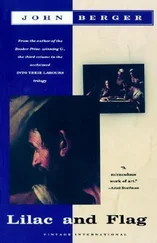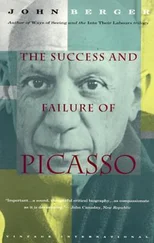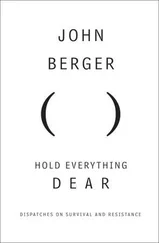And so having established these points and the precise relationship between them — round the wrists, at the pit of the neck, under the shoulders, along the thighs, near the knees — he constructs the form of each limb to suggest, given those fixed points, all its possibilities of movement. The figure becomes like a dance which does not need time to unfold. The dancer’s movements have been made simultaneous, but within itself each movement obeys its natural law.
Naturally the way Zadkine actually worked was not as cerebral as I have made it seem; nor is the impact of the sculpture half as involved. It is a popular work, accepted by the citizens of Rotterdam, because its dialectic is a very human one. Unlike most memorials, it is neither gruesome nor patronizing. It does not try to turn defeat into victory, nor does it hide the truth by invoking Honour. It shows that different people can use the words defeat and victory to describe the same thing, whilst the reality which is actually suffered is something continuously developing and changing out of that apparent contradiction. And it shows this in terms of pain and effort. It stands on the edge of the land. And it is as if this figure has crossed the world and come through history to stand on the most advanced point to meet those who will soon arrive.
1959
Our productive, scientific abilities have outstripped our ethical and social conscience. That is a platitude and no more than a half truth, but it is nevertheless a way of summing up at least an aspect of the crisis of our time. Nearly all contemporary artists who have faced up to this crisis at all have concentrated on the ensuing conflict of conscience. Léger was unique because he seized upon our technical achievements and by concentrating upon their real nature was led on to discover the spirit, the ethics, the attitude of mind, necessary to control and exploit them to our full advantage. It is because of this — because Léger put the facts of our environment first and through them arrived at his attitude to life — that one can claim that he was so boldly a materialist.
As an artist Léger is often accused of being crude, vulgar, impersonal. He is none of these things. It is his buoyant confidence that makes him seem crude to the diffident. It is his admiration of industrial techniques and therefore of the industrial worker that makes him seem vulgar to the privileged; and his belief in human solidarity that makes him seem impersonal to the isolated. His works themselves refute the charge. Look at them. I always feel absurdly pretentious when trying to write about Léger. His works so clearly affirm themselves. In front of a painting by Picasso or Bonnard, one senses such an urgency of conflict that it seems quite appropriate to discuss and debate and plead for all the issues involved. But in front of a Léger one thinks: There it is. Take it or leave it. Or rather, take it when you want it, and leave it when you don’t. Scribble moustaches on his girls if you like. Buy a postcard of it and send it home along with a vulgar one. Lean against it, and prompted by the bicycle in it, discuss where you’re going next Sunday. Let the dumb-bells in another remind you that you’ve stopped doing your early morning exercises. Or stand entranced and reflect afterwards that he has probably learned more from Michelangelo than from any other artist. It doesn’t matter. Look at his bicycles, and his girls in their sports clothes, and his holiday straw hats, and his cows with their comic camouflage dapples, and his steeplejacks and acrobats each knowing what the other takes, and his trees like the sprigs you put into a jam jar, and his machinery as gay as the youth who plans to paint his motor-bike, and his nudes as familiar as wives — what other modern painter doesn’t paint a nude as though she were either a piece of studio furniture or a surreptitious mistress? — and his compasses and keys painted as if they were emblems on flags to celebrate their usefulness — does his work seem mechanical and cold?
Léger’s greatest works are those which he painted since the war and those in which, dealing with the human figure, he expressed directly the profound humanism of his materialist philosophy. Among these are the studies for his famous large painting of builders working together on scaffolding, and the monumental heads with their striped flags of bright colours superimposed over their contours.
These heads with their strips of bright orange, red and blue, represent the culmination of Léger’s art. Léger began with the machine. His cubist pictures were untheoretical. In them he simply used the cube and the cylinder to recreate the energy of machine blocks and pistons. Then he discovered the machine-made object. Unlike most artists, but like the average man of our century, he was not interested in its associations but in how it was made. From this period in his painting he learned how to manage solids — how to manufacture them, how to preserve a surface with paint, how to dazzle with contrasts, how to assemble mass-produced signs with colour. Later, interested by how colour changed the appearance of shapes and vice versa, he began designing abstract murals. Yet, unlike so many others, he always realized that abstract painting meant nothing if separated from architecture. ‘It is our duty,’ he said, ‘to spread light and colour’ — and he meant into the mean, grimed city apartments. From this phase he learned to see beyond the single static object: he learned to connect. And with this formal development came a human one. He saw that the machine had made labour collective, that its discipline had created a new class, that it could offer freedom. He suddenly saw machines as tools in the hands of men, no longer as mere objects in themselves. From that moment everything he painted ceased to be a celebration of the mechanical industrial world as it is, and became a celebration of the richer human world to which industrialization would eventually lead. He painted Adam and Eve and made them a French worker and his girl granted Leisure. He painted bicycles as a symbol of the machine available to the working class which could convey them to where they wished. And he painted his monumental heads with their waving flags of colour.
Léger was not one to parade his sensibility as though it were his only virtue. The bright dynamic colours reflect what he learned from the machine. The unblinking confidence of the heads, expressed in their faces themselves and in the steady unchanging contours which define them, reflect what he learned from those who work machines. The two then combine. These paintings incorporate all the formal discoveries of modern art and yet are classic, suggest order and yet are full of gaiety. The strips of colour run across many different forms yet are so finely modified and placed that they give to each a solidity and definition which is nothing short of miraculous. I have called these works flags. They are emblems for something permanent and are as full of movement as pennants in the wind.
In fact Léger was the only modern European artist to have created an heroic style. Many factors prove this; that his work has a dignity and a sense of scale which in no way relies upon his literal subject; that on one hand it is as formal and architectural as a Corbusier building, and on the other is as simple in meaning as a ballad; that the nudity of his figures is less private than any painted since Michelangelo. He makes his figures nude to emphasize what they have in common. He calls one picture Les Trois Soeurs. The heroic artist cannot by definition be interested in idiosyncrasies.
Léger rejected every implication of ‘Glamour’. ‘Glamour’, as it has now come to be understood, stands for everything that separates one person from another, whether it is their ‘special’ understanding of art or the colour of their lipstick; Léger was only concerned with what we have in common. The current vision of the genius is almost synonymous with that of the mysterious, misunderstood outcast; Léger’s vision of the genius was of a man with an imagination so in tune with his time and therefore so easily understandable, that he could become almost anonymous — his works as easy and yet sharp to the eye as popular proverbs to the ear.
Читать дальше












